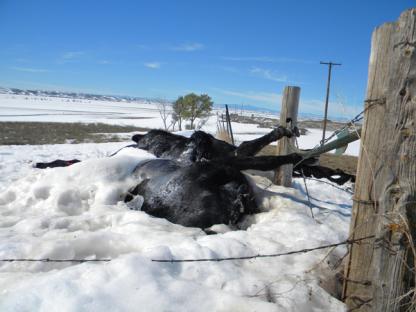The cost of dining out is going to get higher, and we have natural disasters to blame for it. First up, a loss that got everyone's attention, followed by more devastation that only made it into agriculture news.
In the early morning hours, on Sunday August 24th, a 6.0 magnitude earthquake in the San Francisco area didn't result in human loss, but wine reserves took a severe hit. Napa Valley was the epicenter of the August 25th earthquake, home to nearly 500 vineyards in the area. The impact of an earthquake would be felt in the wine reserves, thousands of barrels and bottles of wine were destroyed. Many of the buildings that sustained damage were those that had been retrofitted to withstand earthquakes.
Wineries are reporting $15,000 to $20,000 losses to their inventory. One vineyard claims its water tank came untethered, which could result in further crop loss in the midst of current drought conditions.
It's estimated that Napa Valley alone could submit millions of dollars in loss claims, counting wine losses alone.
Likewise, beef prices are rising, about 6 - 7 percent due to the devastating loss of cattle in a South Dakota storm last October. Today, ground beef has reached a record high of $3.55 a pound up 56 percent from 2010. CNN Money reports that price increases in February resulted in the biggest month-over-month rise in more than a decade, but they don't seem to connect it to the loss of cattle only months before.
In case you missed it, and it seems like everyone outside of agricultural circles did, South Dakota cattle ranchers took a catastrophic hit to their livelihoods when a sneaky freak storm took them by surprise in early October.
It was seasonably warm one minute, and the next their cattle were caught in a blizzard. The cattle, in their summer coats, and still in summer pasture were soaked by the rain, then frozen in the bitter cold wind. Fall roundup was still two weeks away, when ranchers would bring them in for closer observation and more navigable terrain. As it was, the cattle became disoriented in the snow, and unreachable by ranchers. The storm resulted in the deaths of 40 - 50 percent of most herds, primarily heifers due to calve in the in the spring.
An estimated 60,000 to 80,000 head of cattle were lost, and it is expected to take at least five years to recover the generations of beef cattle that can feed America. I wouldn't expect the price of steak to level out any time soon.
So if you're planning to go out for a juicy steak and a nice bottle of wine any time in the next couple of years, be prepared for the expense. Consider it a worthwhile contribution to the beef growers and vineyards who work so hard to put it on your table.
Sources: ProgressiveCattle.com Grubstreet.com


